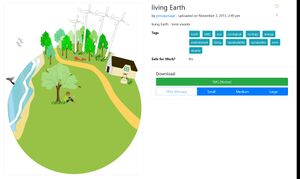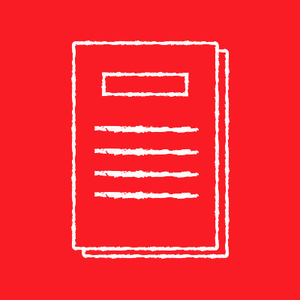Once the information has been collected, it is important to ensure that it becomes useful and accessible documentation for later use. Next we will propose some strategies for the processing and storage of information.
Contents
Information processing
The purpose of processing is to ensure that all materials are useful, either to the team that collected the information from primary or secondary sources, or to other people in the future. For this, it should start by considering some of the main uses of the documentation in the future, for example, investigations of secondary sources, replication of the solutions or data analysis.
Key activities
Some of the key processing activities are:
Select and edit the material. Processing can be started by removing redundant or unusable material due to poor quality. This is a task that, although it takes a lot of time, produces good quality documentation. As a second step, it is recommended to make simple edits such as section cuts without material content such as photographs and videos. However, it is important to avoid making edits to the material that hinder its future use, such as applying filters or reducing the quality of the material.
Convert to accessible formats. The digital formats used for content storage are important. Consider, for example:
- Reduce the use of difficult-to-edit formats as much as possible. An example is PDF documents.
- Avoid formats that require specialized or proprietary software (ie, paid to use). Some examples are images in Adobe software or documents that require Microsoft Office, since they are not always available to everyone. Instead, it is recommended to use open license formats and that are supported by free and easy-to-use applications.
- Remove passwords or encryption of content. If the content is sensitive, then its availability as open documentation should be reconsidered.
Integrate the information . This may involve the aggregation of materials where possible. For example:
- Consolidate multiple related documents into a single editable file, in an accessible format.
- Organize observational data in databases. For this, it is recommended to apply the principles of ordered data (in English it is known as tidy data ) refers to the organization of observations that facilitate their subsequent analysis [1] .
Anonymize sensitive information . Consider removing any personal information that is not relevant to the case study. This applies to both personal data (available in lists or interviews) as well as metadata (for example, locations embedded in photos that can identify people who wish to remain anonymous).
Automate processing
One way to reduce the workload associated with processing is to use tools to classify, edit, and convert materials. Examples of these processes are open license software tools for photo and image management such as DigiKam (as an alternative to Adobe Lightroom, which is paid). This tool allows you to automate a good part of the process.
Programmatic tools can also be used for processing. Although these require certain programming skills, they can make the job easier and be integrated into the workflow. An example of this is ffmpeg, a powerful tool for converting video files.
Storage
Once the information has been processed, it is time to store it in a place that is available so that other people can access it and use it, as the case may be.
Store locally or in the cloud
It can be started using accessible or easy-to-use devices, such as smart phones, USB flash drives, tablets, etc., which often allow a large amount of information to be stored. However, it is recommended to centralize this information in local electronic devices such as computers or institutional external hard drives (if it is stored in institutional work) to extend its availability and permanence over time, duly labeled and organized.
However, open documentation seeks to be available to other people and develop collaboration networks. The most common way to do this is to use content storage platforms on the network. Although these solutions are quite well known and used, there are some practices to consider in order to share documentation that is accessible and usable.
Keep in mind the longevity of the information. In the first instance, tools such as Google Drive and Dropbox are used, tools that allow organizing and storing information, as well as providing specific access with other people or the general public. However, one of the problems with these solutions is that their access usually depends on a single person or platform policies, so often these accesses are revoked by mistake or because the person no longer works on the platform. project and contact is lost, or even due to the unfortunate loss of access to an email.
Consider accessibility. This implies, among other things, choosing platforms that preferably do not require registration or too much personal data, that is available for low-speed Internet connections, and that the interface is available in several languages.

Openclipart is a platform that contains clipart images that can be used for various uses such as presentations or serve as illustrations for books or manuals. All Openclipart images are in the public domain, which means they can be used without restrictions.
On the right is an example of an image available on the site, showing some relevant characteristics on how to process and store information:
- Use of open formats. The illustration uses the SVG format, which is open (even supported by browsers) and editable by a large number of software tools.
- It has descriptive metadata: the date and time of creation, the author, the title, and even a record of subsequent uses for derivative works (that is, someone used the image as a basis to create a new one).
- It is available on a platform accessible by anyone on the Internet.
Make information "discoverable"
For the documentation to be used by more people, it is necessary to make it available to those who seek it. An example of this is someone searching for images of local energy solutions, interviews describing water filtration initiatives, or schematic drawings of how an agricultural business model works.
The easiest ways to ensure discoverability are:
- Create folders to organize the information according to the classification criteria of the different processes and types of solutions. Examples are: per year, per event, or per project.
- Facilitate downloading of content and encourage the use of multiple copies on different platforms.
- Add metadata to files and collections. Metadata is often defined as "data about data" and is tags that allow content to be identified: date, location, author, comments, etc. Some digital files have the ability to store metadata, for example the EXIF format for photos, which can be viewed from a computer or phone (by searching for the option to view an image's attributes).
In this way, the result of the Solution Mapping activities will be accessible to all those who seek to address local problems with the help of knowledge obtained elsewhere.
Making documentation reusable
Finally, it is important to consider how documentation management encourages other people to use the content. This can be facilitated through the selection of open licenses and their correct use. The section on open licenses will explain in more detail how to choose and apply a license for documentation and knowledge products.
Relevant Resources
- Wikipedia:List of open file formats is a Wikipedia page that lists some open license formats for different types of content.
- This Digital Preservation Handbook resource explains in more detail the use of licenses for other types of content not described in this material.
- Frictionless Data is an initiative to standardize data processing and storage.
References
- ^ Wickham, H. (2014). Tidy Data. Journal of Statistical Software , 59 , 1–23. https://doi.org/10.18637/jss.v059.i10



